Recipe development for our Pestival menu, by Josh Pollen – one half of Blanch & Shock and one third of London Research Kitchen
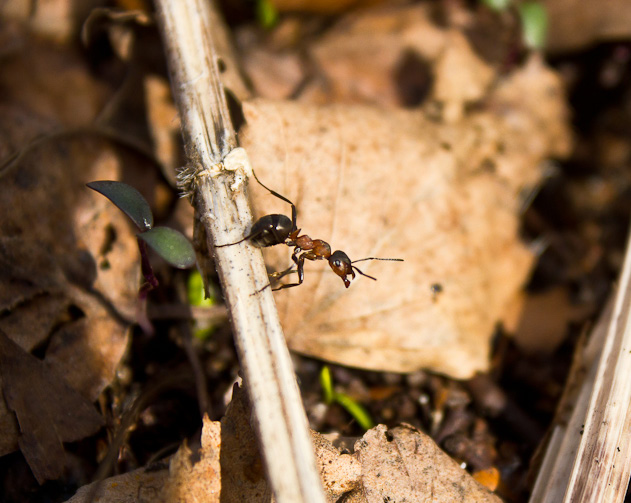
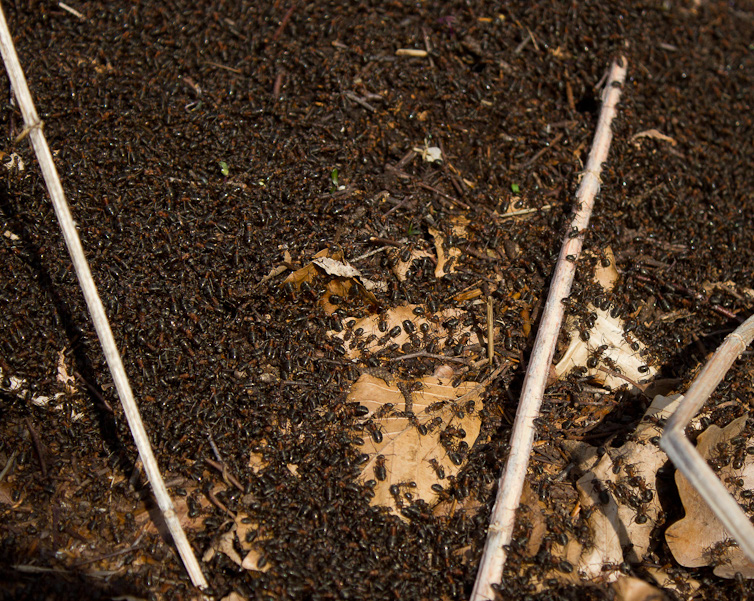
To consume an ant is an almost absurd study of scale. There may be no smaller legged creature eaten as a principal ingredient, yet the ant’s size belies the intensity of its taste.
A wide variety of the12,500 recognised species ofthe Formicidae family are eaten in cultures around the world, from the Colombian cinema snack of fried hormigas culones (large-bottomed ants, or Atta laevigata) to honey ant species such as the black honey ant (Camponotus inflatus), eaten as a sweetdelicacy by Australian Aborigines.
The nutritional efficiency of ant protein is not high compared to other insects, but that is not the point. They are eaten more as flavourful supplements and sometimes given as symbolic gifts. Simply, different ants exhibit different flavours [1]. Numerous chemical compounds contained in the ant’s exocrine glands are considered responsible for this diversity – in particular formic acid, a naturally-occurring organic acid first isolated in ants, constitutes an element of its defensive allomonic arsenal and is responsible for the sour taste. We have eaten ants which taste uncannily of lemongrass and kaffir lime, and have been told of ants tasting of mint and orange blossom. The variety of flavours could be attributed to the semiochemicals used for communication within the ant nest and their employment by different strata of the hierarchical ant colony. Their diet and habitat could also have parts to play, and it surprised us that the flavours of the Danish ants are oddly tropical!
At Nordic Food Lab we have used two species of ant found in Denmark, the wood ant (Formica rufa) and the smelling carpenter ant(Lasius fuliginosus). For the first, we visited Tage Rønne, a woodsman who harvests birch sap and other traditional ingredients in the woods north of Copenhagen. Tage remarked that the ants had emerged from their winter hibernation that very morning to greet the first sunshine of the year. He led us to a spot between the birch trees where a frantic carpet of ants seethed from the entrance of a nest to search for newly-thawed forage. We scooped up a number of ants (thousands? tens of thousands?) in a container, leaving a sprinkling of birch sap for the ants in exchange – a nutritious energy booster as a head start for the new season.
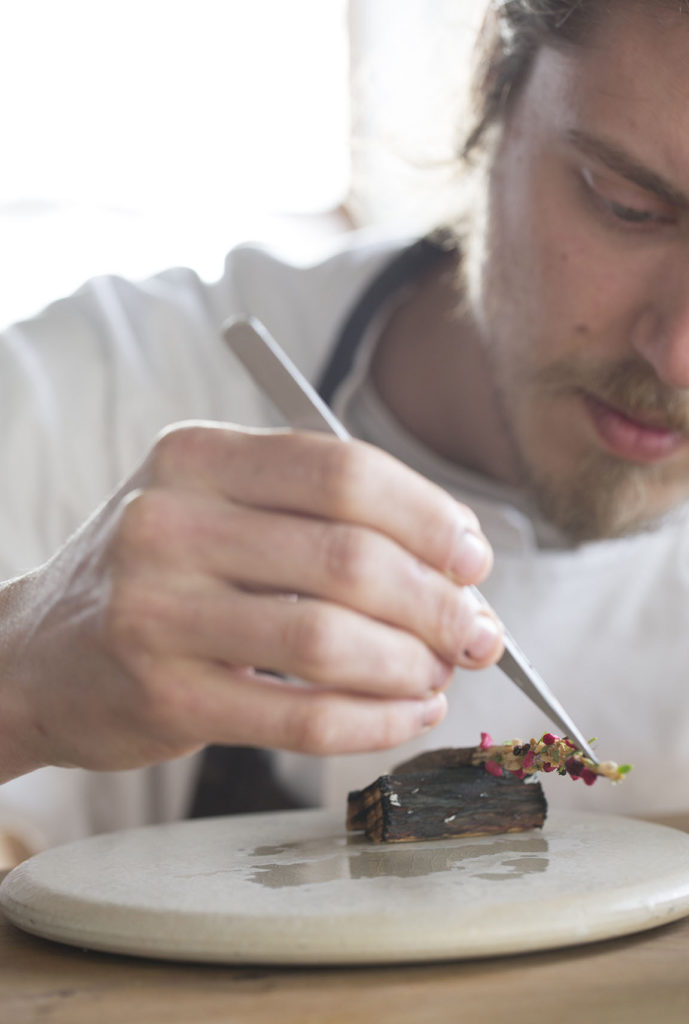
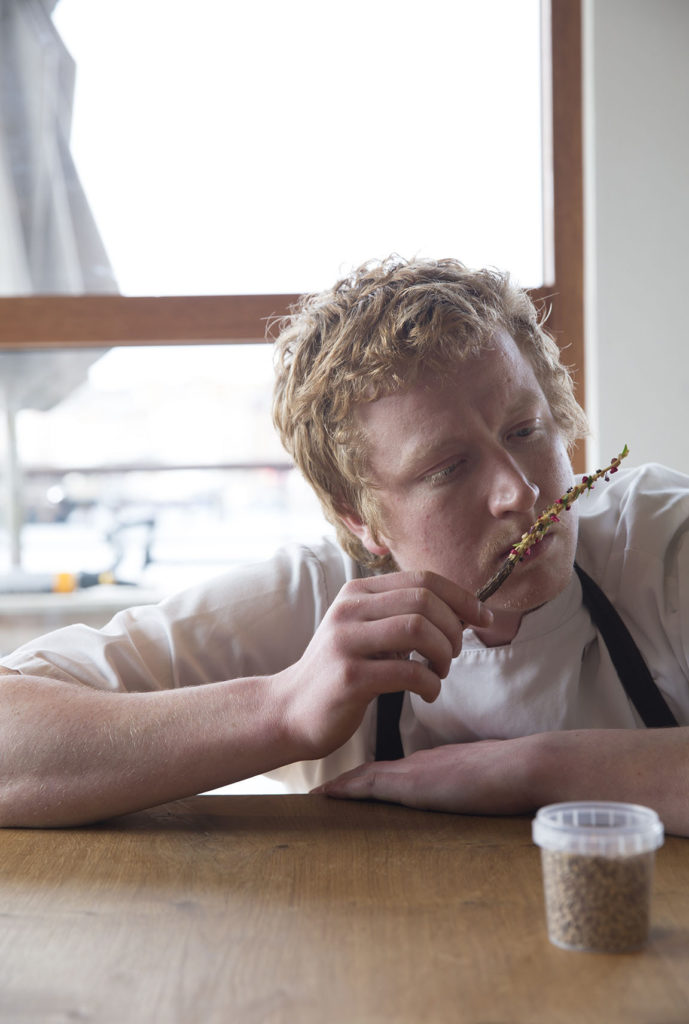
Back at the lab, we blast-chilled the ants. It was not without a tinge of solemnity, for although we had strong culinary interest in their demise it was still odd to think about how many individuals we had removed, and whether the structure of the colony would be affected. Would the complex hierarchy be thrown into disarray, even temporarily? Would workers have to be re-assigned tasks? We had and continue to have many questions about the impact of harvesting insects, many of which remain only partially and unsatisfactorily answered.
We were sent the smelling carpenter ants by Thomas Laursen, a biologist and teacher from Jutland, the man responsible for the foraging of several hundred thousand live ants for the Noma pop-up at Claridge’s. There is a colony of Kaffir lime-flavoured ants in his garden.
The course we devised to open the Pestival menu was inspired by ant and termite ‘fishing’ tools used by chimpanzees. Eating insects like these is part of our evolutionary heritage – so it’s not surprising how easily it comes back when in the right company (for example, in this video where chimpanzees enculturate a documentary filmmaker to eat termites). On a whittled liquorice root we brushed honey infused with juniper wood and studded it with the frozen ants, freeze-dried fruits, seeds, toasted crushed grains, small aromatic leaves and flowers. This ‘chimp stick’, as it came to be known, was served on a charred piece of juniper wood (also gathered by Tage) and guests were able to choose whether to suck all the edible parts off the stick, mixing the sweet, sour, aromatic, bitter and toasted notes or to pick at it and taste the flavours individually. Our hope was to evoke the mess of flavours and textures that would surround the ants in their field or forest habitat, and to use the sour taste to brighten the palate for the ensuing menu.
Chimp Stick
Liquorice roots, whittled
A clear, light honey
infused with toasted juniper wood
Some local ants, frozen
within an hour of harvesting
Buckwheat, soaked
overnight, toasted and cracked
Linseeds
Freeze-dried raspberry pieces
Small leaves of purple
shiso and coriander cress
Small cherry blossoms
Infuse the juniper wood
into the honey overnight. Strain and filter.
Whittle liquorice roots, removing all rough skin an thinning slightly to a more slender shape, leaving a section at one end unwhittled asa ‘handle’.
Brush the liquorice root on all whittled surfaces with a light coating of honey – just enough to make things stick. Place liquorice root handle-side down into a bowl of rice to hold the stick upright for plating. Begin adhering the buckwheat and linseeds, then the ants, then the raspberries, herbs, and flowers. It is best to begin with the more sturdy ingredients and move on to the more delicate ones. Coat the stick until a desirable density is reached.
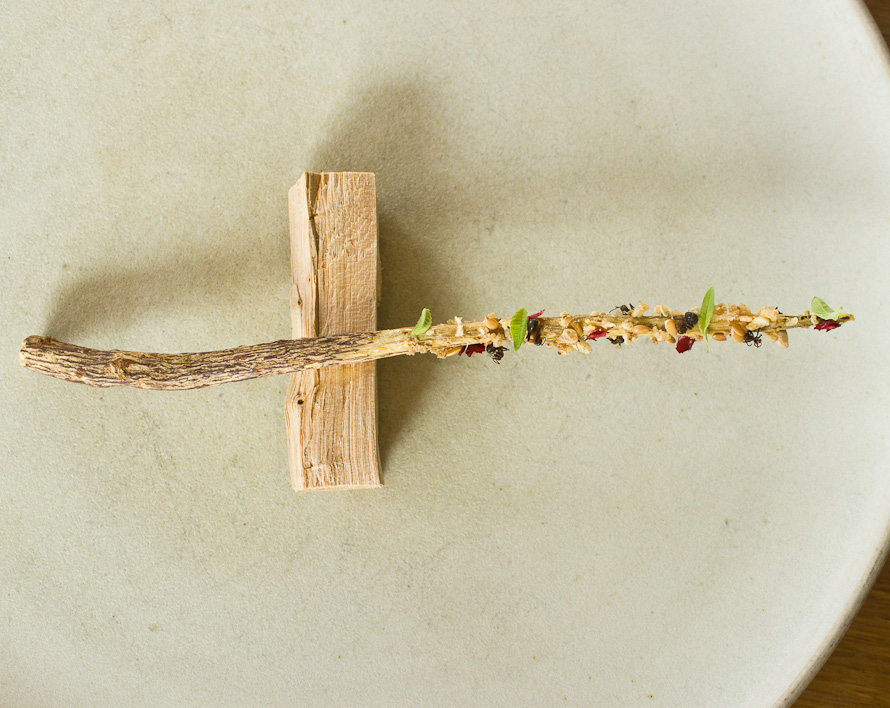
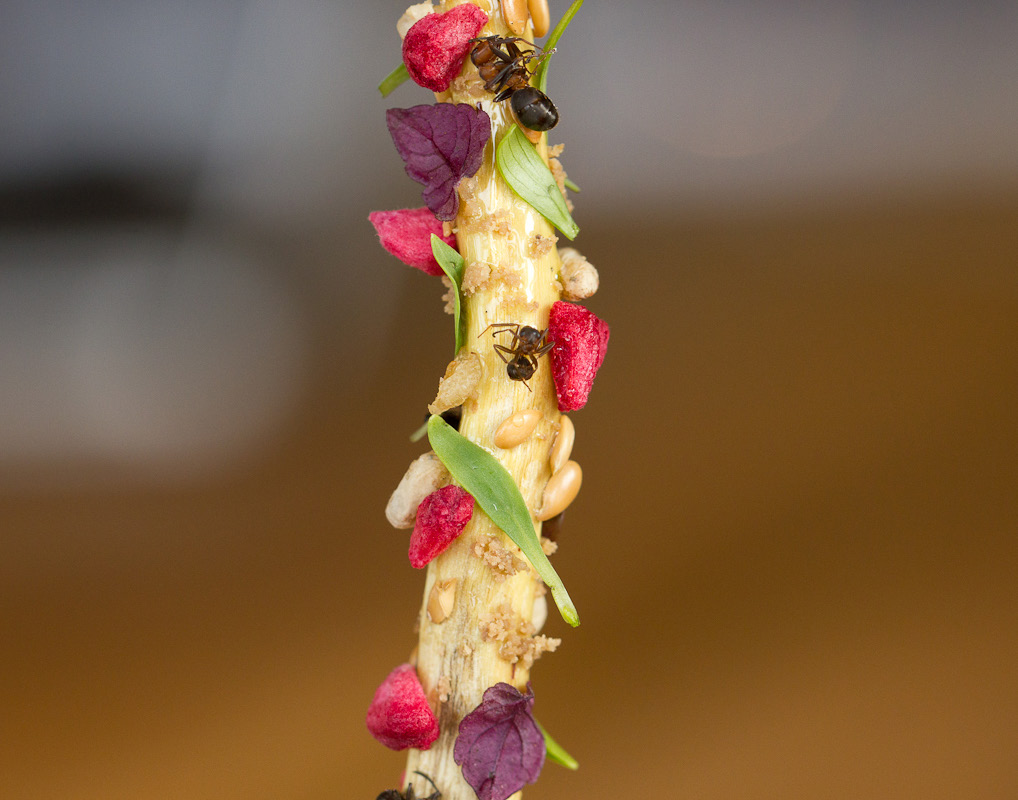
References
[1] Morgan, David E. “Chemical Sorcery for Sociality: Exocrine secretions of ants (Hymenoptera: Formicidae)”. Myrmecological News . 11: 79-90. Vienna, August 2008.
